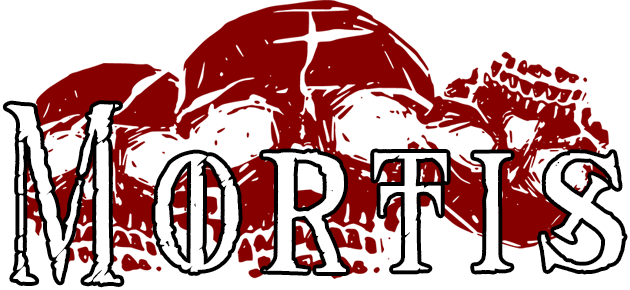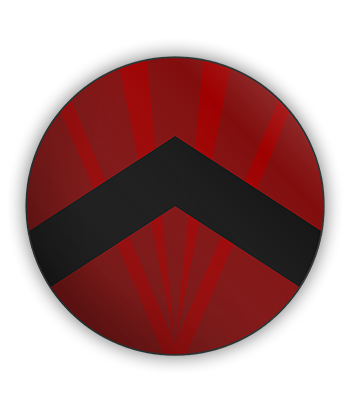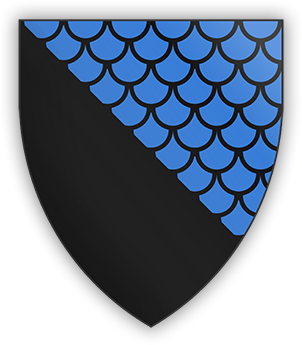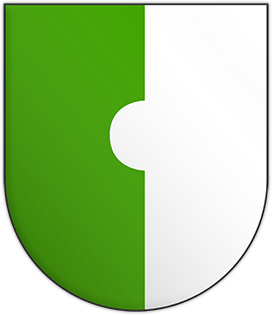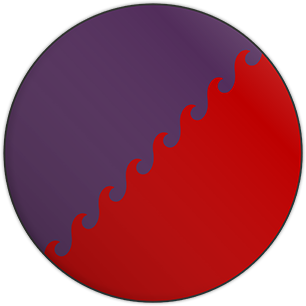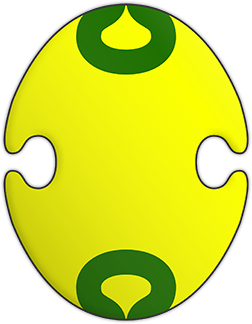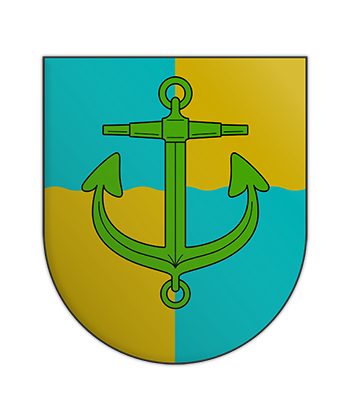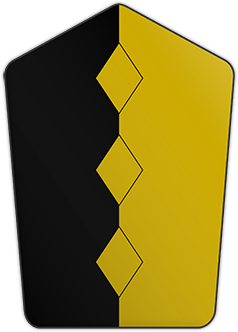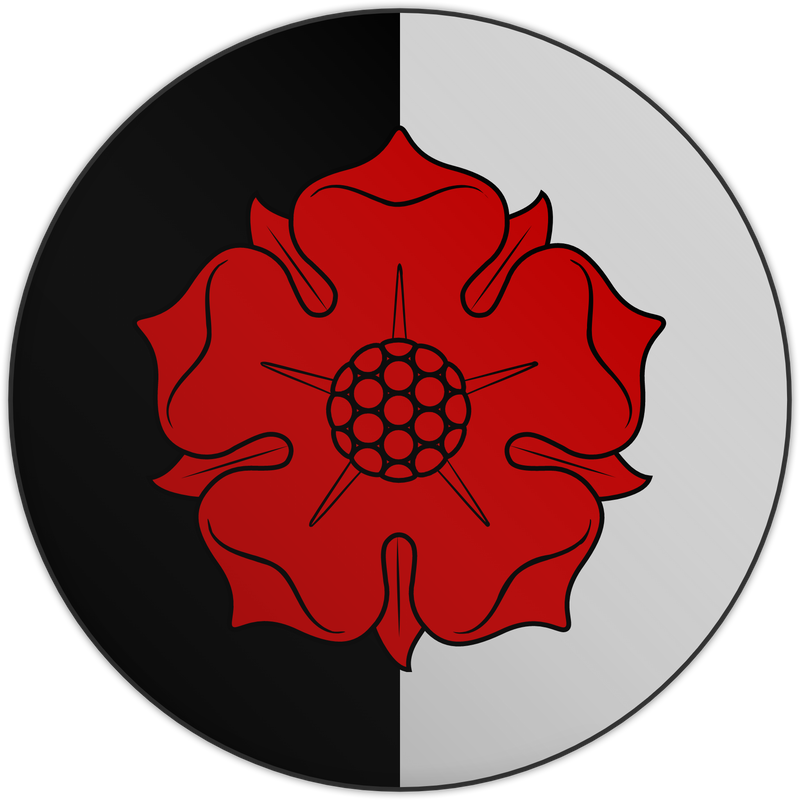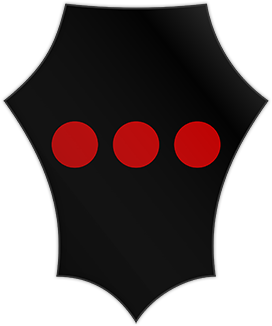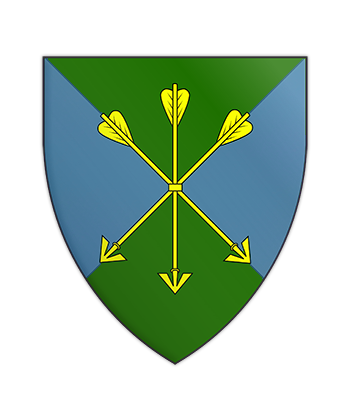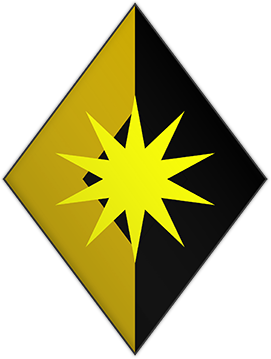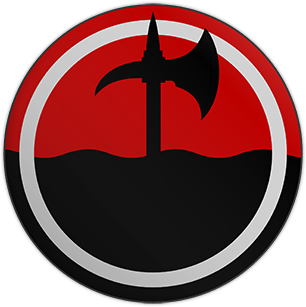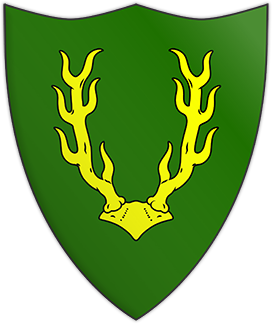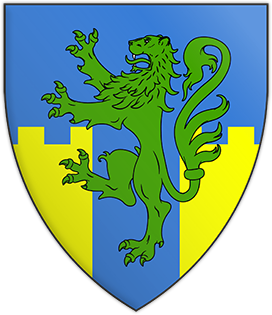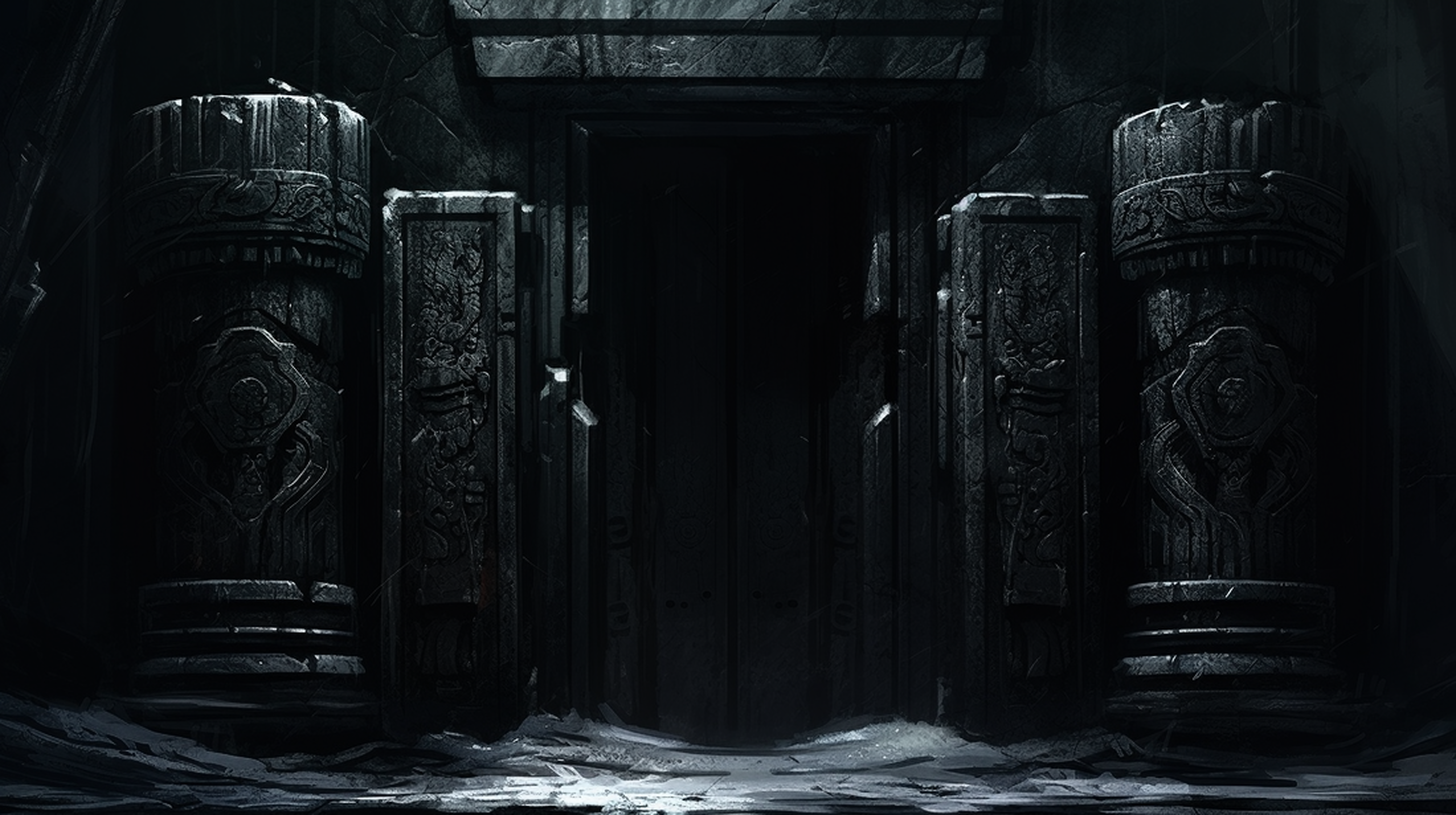RACES & cULTURES OF MORTIS
Races & cultures of Men
|
THE ARKKADIANS | FIRE AND ZEAL
"Fire creates just as easily as it destroys. A chance to rebuild, a chance for a new future. We must follow the guiding flame to these new lands to forge a new empire from the ashes of the old." This new land is a good land, crawling with creatures who fear the fire and fear the ways of the Arkkadians. As the passions of the old empire burns within us, consuming everything we meet by day and filling us with insane dances at night. This new frantic fire has alienated our neighbors, so our fire burns all the more hotly. Our dances are all the more lively. Our ambition grows ever more greedily. Soon all will know, and fear the sons and daughters of fire. The people of Arkkadia arrived at the western coast of Evslore from far across the sea, where the hot sun burns the land to ashes. Arkkadia's influence and power once spread throughout all of Ufura, but rebellion and the rising power of great kings and heroes during the Age of Shadows brought destruction and death to the old empire. Now the people of the flame have set their sights on Evslore. The Arkkadians are a proud and arrogant people, their warriors are educated for war from the time they are born. As much as possible, they keep close formations to defend their brothers and sisters in arms with shields, but in open combat they are quick, merciless and cruel. For that reason Arkkadian warriors adopt two different attitudes: Soldierly formations with a staunch pose, the shield covering part of their hip and chest, firmly grasping deadly spears. Left to their own devices, the Arkkadians spirit is a much more deadly thing, executing horrifying dances of death and enemy mockeries with cruel, frantic and often mad gestures. With the death of Emperor Khon and the collapse of the Empire, many Arkkadians still hold tradition in their hearts and await the moment that they can return the Empire to its former glory. |
|
THE ASSAI | MEN OF THE ETERNAL FLAME
Driven by their covenant with Uthra, the Mother of Swords, the Assai Empire has marched across the vast expanse of central Evslore with conquest and glory in their hearts. The Assai people travel in bands, clothed in rough linens and dark shawls that cover their head, face, and necks. A black mask is always worn, serving as protection from habitual sandstorms and exposing only their steel-gray eyes and the impression of narrow features. Led by a strong matriarchy, the Assai see their women as more than capable of holding their own and even go as far as to elect them to political and military positions. Many attribute their strong military force to be a direct result of this inclusion. The men and women of the Assai Empire are nearly indistinguishable when standing side by side. The same protective clothing is worn amongst all groups and with only their cold eyes visible to the onlooker, a difference in height would be the only immediate giveaway. Spears are thrust into an Assai’s hands as soon as they can stand upright, and countless wars have gone on to prove that from birth they are more than willing to lay their lives down for their people and the city of Anhki. |
|
THE BRIAGOTHS | STEWARDS OF THE EMPIRE
Briagothians are believed to be the first humans, settling the lands of Ainerth and founding the Kingdom of Briagoth, unifying nomadic tribes of men thousands of years before the exodus. Their society has grown to prosper, or at least it had before the fall of the God Binder Empire. Briagothians were devoted to the God Binder's will, even in death. Noble knights, vast kingdoms, and inquisitorial guilds are markers of success for the Briagothians. They are naturally talented warriors and their craftsmen are responsible for some of the finest armors and weapons known all throughout Ayotha. Briagothians, despite all of their troubles, are prideful and fiercely independent but they are also defined by an unnerving zealotry and dedication to a dead man. They work ceaselessly to rebuild what has been lost to usurpers and demons. The Age of Death however, has not been kind to the Briagoths, the Vandor have seized most of their territory and disposed of their unruly lords on Evslore. Now they are merely a shadow of their former glory, waiting to seize a moment in an attempt to rebuild their fallen god's legacy. |
|
THE EUNHYE | PEOPLE OF HONOR
The Eunhye are profoundly influenced by the ideal of group harmony, respect for their elders and the authority of their leaders. The importance of family and tradition to the Eunhye cannot be understated. Their homeland of Geum is a small island nation far away from the shores of Ainerth. The Eunhye migrated to Evslore and Ainerth sometime during the start of the sixth age. They arrived just in time to witness to the fall of the Arkkadian Empire. They are a kind and gentle people, but their warriors and unique fighting styles (usually hand to hand, bladed daggers attached to ropes, or large two-handed flails) are their preferred styles of fighting. The Eunhye people are swarthy skinned, with large blue and green eyes, their clothing is often simple or spartan in nature. |
|
THE HWN | DEMONS OF OCILEB
The enigmatic Hwn tower over most men with a strong physique seemingly chiseled out of stone. Broad noses sit atop sharp, tanned features, and perceptive, almond eyes waste no time in analyzing their prey. They are quiet, resourceful, and choose their words very carefully when speaking to others. Though their frames are quite large, there is a grace about them that allows these people to excel at most anything they put their minds to. Perhaps a sign of their decadent nature from King Sin-Nasir’s rule after Menos, the Hwn are rather fond of jewelry and lavish accessories, decorating their figures with a few piercings and ornate bracelets. The courts of Andminas are frequented by many Hwn nobles and significant scholars, never lacking for their opulence and poise. Where commoners usually stick to travelling and trading, Hwn nobles have been known to practice sorcery. The cruelest of these noble men and women have been rumored to experiment on their own servants. Those who can withstand the torture are commonly referred to as "the Faded” for their minds are never the same afterwards. |
|
THE KASHATH | MASTERS OF WARFARE
The Kashath live for today and believe in taking risks and pushing boundaries. They spend their days drinking, crafting, and building up their communities in the hills. Most Kashath are easily distinguishable by their jet black, ashen hair, but it is not unheard of to see some with blonde or brown hair as well. However, red-haired Kashath are almost never seen, and are always judged as an omen of ill-will and bad luck-a sign of being touched by the Arkkadians dark fire gods. The “fire-touched” are nearly always abandoned at birth, sent away, or sacrificed in penance. The Kashath wield heavy spears and are renowned cavalrymen. Kashath are used to adjusting to a variety of terrains, and delight in using intimidation tactics and guerrilla warfare to demoralize and frighten their enemies. |
|
THE KHALD | KINSLAYERS
A new terror has spawned from deep within the northern realm. Men who are little more than deformed creatures with massive proportions and incredible strength, the Khald are endowed with cunning and an allegiance to their own as they pillage and raid the soft and broken lands of Evslore. The Khald began terrorizing Evslore's inhabitants sometime after the cold Mists of Enlil began to sweep across the world. Pushed to the shores of the north realm, the enchanted ice sheets that housed the great terrors from that age forced them to leave their homes. Many people believe that the Khald are a visitation of wrath from the dark things that lurk within the north, forgotten and banished. An unstoppable force of destruction for those left unprepared. Raiding parties have been seen in all parts of Evslore, from the resource rich shores of Albion to the hellish wastes of Ainerth, and the humid jungles of Ixindar. As a people the Khald put their faith in their strength. They believe it is all that matters among things that move and change. None are exempt from the law of strength, not even their fellow Khald. The terrible strength of the Khald is horrifying to see on the battlefield. A blow from their weapons of stone and bone can devastate even the bravest challenger. Even the ground shakes when a Khald decides to stroke. For those capable of seeing it, Khald strength is also a weakness. Swift and carefully timed attacks can break through their thick skins and stone like limbs. But beware; The only thing greater than Khald strength is Khald rage. |
|
THE KOMUH | ANCESTORS OF THE ANCIENTS
The Komuh have rich black skin with cool undertones, and either honey-gold or dark-hazel eyes with lean figures. The Komuh wield a traditional Ida, with a pouch of poison at their side named “Silver Tears”. In battle they are known to coat the sword with the poison, and the slightest cut from the blade is enough to induce a paralytic state. The ongoing battles and skirmishes on Naraka against the other human tribes is treated like a game to the Komuh. Their people are rather fond of decorative bead-work and typically wear a dark leather belt with a string of colorful beads along the belt panel. With every kill that glorifies their new city, another bead is added. For the sake of “the game”, hunting parties often trek through the dunes of the foreign Hwnish Empire to catch stragglers and weaken some of their surrounding outposts. |
|
THE NARAK | THE FORGOTTEN PEOPLE
Once a coastal people in ages past, the Narak now claim an entire continent as their influence and power spread, yet their ancestral home is still occupied by the Komuh. Eastern steppes and deserts, where harsh winds blow and food is scarce. The memory of their former lives spur them on, preserving the knowledge of their culture and art and dreaming of returning to their homelands. The Narak value respect and elegance in form and function. Their power and effectiveness on the battlefield come from these attributes. Though they are not the strongest of the inhabitants of Evslore, they cut their enemies down quickly with a precision that strikes fear into the hearts of any warrior. Before the fall of the Arkkadian Empire and the cataclysm of the Long Dread, the Narak sent their youth to train in schools to learn the ways of the wytch, but this tradition and its knowledge died with their old lives. |
|
THE NEMEDIANS | MERCHANTS OF CRUELTY
The Nemedians reside in the south and eastern portions of the Ainerth continent. They are a people who have taken to utilizing the dark magics and cold mists of Enlil, at least that's what many of the other peoples of Ainerth have come to believe. The truth of the matter is that Nemedian culture has always been harsh, slaves make up a vast majority of the imports and exports that cross from Nemedian lands into Briagoth and to a much lesser extent into the lands of the North. They are ruled by a cruel and indifferent empress who sees little value in coming together to cast down the alien horrors that now stalk these lands. It should be noted that the Trade Houses of Nemedia are some of the most powerful in all of Ayotha and it's said that they hold the true power, leaving the Empress to her own devices as long as she doesn't disrupt their business. Nemedians have always been a hardy people, swarthy skinned and with a keen eye and silver tongue when it comes to dealing in trade. |
|
THE OKMA | THE HONOR TORN
The Okma have remained isolated from the outside world for the last few centuries, purposefully shutting themselves off so that their people would know peace and prosperity for a time. During this time, the Okma experienced a resurgence in culture and the arts and honed the art of swordsmanship with a tachi sword. There are close to 100 notable families within their civilization, and each family has a blade that was forged at their clan’s conception. That blade has been passed down to family members ever since, and it is very rare to see any blades forged outside of that. Swordsmanship ties in directly to the mysticism and spirituality that defines their culture: Rawutism. In Rawutism, it is believed that there are spirits that live within everything; every waterfall, tree, bear, and even the wind itself possesses a unique spirit. The Okma believe that by exercising patience and listening intently, they can communicate with these spirits and eventually attain perfection. Each spirit possesses unique traits and abilities that the individual emulates in their quest for perfection, hoping that it will bring them closer to their chosen spirit. By incorporating swordsmanship into their spiritual practices, an Okma citizen practices patience and flawless strikes. They wait, listen, and strike when their opponent shows weakness at the most opportune time and not a moment before, ending combat before it even truly began. It is this deadly precision that worries the empires of Ohrros, and what they might be contending with should they journey farther to the east. The Okma have tawny beige skin, with straight raven or chestnut hair and wildly different personalities depending on their patron spirit. An Okma that favors the bear may have a larger figure than his kin, and exhibit traits of being protective, strict, and gruff. Far more recently during the Age of the God Binder the Okma thrived during this time of war. They never received any of their blessings from any gods, always finding their physical and mental strength from within. For six-hundred years, they lived in relative safety. When the Wytch Queen’s power was beginning to wane, she struck out against the Okma, enslaving many of them into a life of servitude. Many Okma houses considered it a great honor to serve the Queen, and did so willingly; many even sold their own people for a hefty turn of coin and guaranteed safety from the Empire. |
|
THE OMZU | WORSHIPERS OF THE DREAMERS
Clad in muddied rags of leaves and twine to help them blend in with the morass, the Omzu are deeply superstitious and wary of outsiders. As a result, the Omzu have learned to adapt to their surroundings, blending into the mud and foliage, and have mastered the art of laying discreet traps all throughout the swamps they call home. Beneath the layers of dirt and mud, are short, scraggly, black beards, thick mops of black or gray hair and jetty black skin. Their faces are broad and flat, almost ape like in appearance. Effigies and sanctuaries dedicated to putrid and unknowable gods are not an uncommon sight among the Omzu settlements, they worship the old gods which have long since been forgotten and removed from the writings of the most current and widespread religious texts. |
|
THE ORONOK | MEN OF THE NORTH
The Oronok favor the occupations of merchants and fisherman and are frequently found behind the wheel of cargo ships. They are a deeply spiritual people, offering up their prayers and incense to spirits of the frigid wilds before casting off. These spirits are often named Xiloth (Roc), Hopi (Jackalope), Hvati (Blue Tiger), and Eros (Kermode Bear). Golden skin, tanned from working long days beneath Aith-na, is engraved with tribal tattoos depicting the symbol of a spirit. Their tall height and muscular stature is often jokingly attributed to the giant’s blood that flows through their veins. When it comes to fashion, they favor dark blues and rustic browns in their clothing choices. When the furs are pulled back and thrown over chairs, decorated braids of burnt auburn and muddy brown fall to their polished belts, each adorned with wooden beads, feathers, or tokens of one of the great spirits that they follow. |
|
THE SELHA | STAR CHOSEN
The Selha are easily identifiable by their short, lithe frames, dark hair, and wide, dark eyes. Their pale skin makes for a striking contrast against their straight, dark hair, and is seen as the pinnacle of beauty to many other cultures. It is said that staring too long into a Selha woman’s eyes could jeopardize the very virtue of your soul, or that stealing a kiss could stop a man’s heart on the spot. However, this is more likely to be the cause of the toxic rouge that coats her lips. Though they may be small in stature, many Selha have trained to use this to their advantage, favoring the occupations of thieves and assassins. During the Grey Times, the Selha were given a place of privilege among the humans who were enslaved by the elves. The Selha watched and attempted to understand the strange sky magic that the elves utilized, gazing up at the stars hoping to understand what it is the inky-eyed elves could see that they could not. Even to this day, the Selha are nomadic, following in the footsteps of the elves of old, charting the stars and following the celestial bodies to their next temporary home. |
|
THANASI | MEN OF THE HORNS
The Men of the Horns tend to do as they please, wandering the inhospitable wasteland that is the Horns in small bands to take back resources and rebuild their once great city. Most, if not all of the Thansi have dark brown, or jet-black hair, with gray or blue eyes-a physical reminder of the once proud civilization they are descended from. Their women are fearsome battlemagi called the Roaring Spears, clad in loose, flowing garments and wield halberds, spears, and spiked bucklers in battle. The men choose to don heavy armor, wielding two-handed weapons and throwing themselves relentlessly into the fray, slashing without abandon and bathing in the blood of their enemies. More recently the Men of the Horns have banded together with the Trollkin, and Orkon to form the Mercenary Republic directly south of the Assai Empire. This union has caused a feeling of uneasiness in the Andminas Empire. The Men of the Horns have never explicitly shown themselves as conquerors, but banding together with two of the fiercest races on Ohrros makes them quite a formidable foe if they ever decided to push towards the western side of the continent. For now, they are met with welcome in the great cities, frequently hired on as mercenaries, guards, or laborers due to their sheer strength. |
|
THE THORIMUND | MEN OF THE SOUTH
The Thorimund are known for their free-spirited personalities and love of the hunt. Fair-haired and stocky with rosy, freckled skin, the Men of the South usually live close together until a child becomes of age. When this happens, the young man or woman is sent out into the world to bring back a trophy to hang in the Great Hall. This trophy is a testament to their legacy, and their official initiation into their tribe as a respected leader. For this reason alone, they may not return for several years until they find the “One”. Thorimund are fond of dressing in dark greens and browns, reminiscent of the hills of their homeland, and often bring an animal (hunting) companion with them. The Thorimund fittingly sport lean figures and are known more for their dexterity rather than brute strength. These lean figures are untouchable on horseback, whipping and turning about the battlefield all the while loosing dozens of arrows into their enemies. It is said that the Men of the South ride on the winds of Balaam himself, spurred on by the gentle whispers of Kyrenos. |
|
THE VANDOR | CHILDREN OF GOTHA
The men and women of Vandor are as flexible and strong as the reeds they weave into baskets. From the tall mountains of the harsh northern forests and lakes all the way out to freezing northern seas, they can be found living and thriving, following fortune's ebb and flow. One underestimates a son or daughter of Vandor at their own peril. Though their historic rivalry with the Arkkadians is marked by tragedy, the proud, sword-bearing people are set to make a violent upsurge in the Age of Death. Fractious and independent by nature, there are many tribes of people that make up all of Gotha and the Vandor's heritage is a mixture of all of them. The native tribes still exist in the northern mountain ranges, wielding primitive weapons and speaking languages unheard since the Elder age. The lords and nobles of the plains wield magnificent weapons of bronze and iron, sitting upon thrones made of rare timbers and serving their people through council and laws. Prowling the coasts are the seafaring warriors of old Arnbrecka, now in service to the great king Adelburn. |
THE RACES OF ELD (GM-APPROVED ONLY)
Races of Eld: The tuatha
The Tuatha were met with immediate conflict when they first arrived at Ainerth. Assai warriors, carving their way across the heart of Ainerth, waved banners of the goddess Uthra while they drove the Tuatha from Mt. Koli. Banished from the Forbidden East, and herded like cattle from the one blessed spot of reprieve after their long journey, the Tuatha looked to their champion Silanest to save them. They boarded what was left of their ships and turned westward, battling unspeakable horrors from the deep, to finally settle upon a flat expanse of pure-white sand on the southern edge of the Walking Wilds. It is here, where they would build the glimmering city of Istani. After aiding and allying with the dwarves in the Great War, it was nothing short of harrowing when the Mad King Tholdun ambushed Istani during the Long Dread and murdered the Council of Three. If that wasn’t enough, soon after they lost their greatest champion, Silanest, to the hand of the Slender Crown. It is said that it takes time for the Keeper to weave new threads once they have been clawed from the tapestry of life. The Tuatha have nothing but time and an abundant source of energy to ruminate on their pain and misgivings.
TUATHA OF THE TODESWALD | WARDENS OF THE WOAD
The life of a Woodland Tuatha is generally dedicated to the protection of Istani, and the lands surrounding it. Day in and day out they traverse the forests along the borders, expending their strength to purge the atrocities that plague their homeland. Every morning, they must start anew. Many have speculated that when the Tuatha first settled, they stumbled upon primordial technology, and that this may be the source of their Exodial magic. Their homes are made in the dark canopies of the forest, so they can keep an ever-watchful eye on the eldritch hoards that slither below as well as intruders that may have slipped past their protective wards. As far as appearances go, the Tuatha of Todeswald have pallid skin, due to the lack of sunlight in the forest, and stringy dark hair. Their eyes range in color from hazel, to yellow, to a muddy brown hue. Each Woodland Tuatha is given a special blade that they carry with them constantly. The blade is inscribed with the Eld phrase, “Ten’istani” that directly translates to “For Istani.” In the case that their bodies or minds have been compromised, a Woodland Tuatha will plunge the dagger into their abdomen, effectively ending any interrogation before it beings or the threat of bringing harm to their allies.
The life of a Woodland Tuatha is generally dedicated to the protection of Istani, and the lands surrounding it. Day in and day out they traverse the forests along the borders, expending their strength to purge the atrocities that plague their homeland. Every morning, they must start anew. Many have speculated that when the Tuatha first settled, they stumbled upon primordial technology, and that this may be the source of their Exodial magic. Their homes are made in the dark canopies of the forest, so they can keep an ever-watchful eye on the eldritch hoards that slither below as well as intruders that may have slipped past their protective wards. As far as appearances go, the Tuatha of Todeswald have pallid skin, due to the lack of sunlight in the forest, and stringy dark hair. Their eyes range in color from hazel, to yellow, to a muddy brown hue. Each Woodland Tuatha is given a special blade that they carry with them constantly. The blade is inscribed with the Eld phrase, “Ten’istani” that directly translates to “For Istani.” In the case that their bodies or minds have been compromised, a Woodland Tuatha will plunge the dagger into their abdomen, effectively ending any interrogation before it beings or the threat of bringing harm to their allies.
TUATHA OF ISHEL INSUL | SONS AND DAUGHTERS OF AITH'NA
The Bright Tuatha make up a vast majority of the Tuatha population and reside primarily within the city walls of Istani. Once, they were great allies with the dwarves. This, however, was before Mad King Tholdun betrayed his closest allies by attacking Istani and murdering the Council of Three. Some would say the Bright Tuatha’ golden locks and sun-kissed skin lost its otherworldly luster that day. Bright Tuatha gravitate towards scholarly roles within society: studying Exodial magic, medicinal cures, and barrier magic to protect Istani from the hordes of ghouls that assault the region. A military sect of the Bright Tuatha, the Sunspears, train vigorously with weapons deemed “spinblades” (two ornate, identical blades, fastened at either end of a steel or wooden haft wrapped in leather), a left-over remnant of the once strong alliance with the dwarves. Though they have no quarrel with the men of Andminas, the Bright Tuatha keep their eyes trained south to the Assai Empire and wait with bated breath for the next blow that could finally bring their crumbling empire to its knees.
The Bright Tuatha make up a vast majority of the Tuatha population and reside primarily within the city walls of Istani. Once, they were great allies with the dwarves. This, however, was before Mad King Tholdun betrayed his closest allies by attacking Istani and murdering the Council of Three. Some would say the Bright Tuatha’ golden locks and sun-kissed skin lost its otherworldly luster that day. Bright Tuatha gravitate towards scholarly roles within society: studying Exodial magic, medicinal cures, and barrier magic to protect Istani from the hordes of ghouls that assault the region. A military sect of the Bright Tuatha, the Sunspears, train vigorously with weapons deemed “spinblades” (two ornate, identical blades, fastened at either end of a steel or wooden haft wrapped in leather), a left-over remnant of the once strong alliance with the dwarves. Though they have no quarrel with the men of Andminas, the Bright Tuatha keep their eyes trained south to the Assai Empire and wait with bated breath for the next blow that could finally bring their crumbling empire to its knees.
NON-PLAYER RACES
THE VANDOR | CHILDREN OF GOTHA
The men and women of Vandor are as flexible and strong as the reeds they weave into baskets. From the tall mountains of the harsh northern forests and lakes all the way out to freezing northern seas, they can be found living and thriving, following fortune's ebb and flow. One underestimates a son or daughter of Vandor at their own peril. Though their historic rivalry with the Arkkadians is marked by tragedy, the proud, sword-bearing people are set to make a violent upsurge in the Age of Death.
Fractious and independent by nature, there are many tribes of people that make up all of Gotha and the Vandor's heritage is a mixture of all of them. The native tribes still exist in the northern mountain ranges, wielding primitive weapons and speaking languages unheard since the Elder age. The lords and nobles of the plains wield magnificent weapons of bronze and iron, sitting upon thrones made of rare timbers and serving their people through council and laws. Prowling the coasts are the seafaring warriors of old Arnbrecka, now in service to the great king Adelburn.
The men and women of Vandor are as flexible and strong as the reeds they weave into baskets. From the tall mountains of the harsh northern forests and lakes all the way out to freezing northern seas, they can be found living and thriving, following fortune's ebb and flow. One underestimates a son or daughter of Vandor at their own peril. Though their historic rivalry with the Arkkadians is marked by tragedy, the proud, sword-bearing people are set to make a violent upsurge in the Age of Death.
Fractious and independent by nature, there are many tribes of people that make up all of Gotha and the Vandor's heritage is a mixture of all of them. The native tribes still exist in the northern mountain ranges, wielding primitive weapons and speaking languages unheard since the Elder age. The lords and nobles of the plains wield magnificent weapons of bronze and iron, sitting upon thrones made of rare timbers and serving their people through council and laws. Prowling the coasts are the seafaring warriors of old Arnbrecka, now in service to the great king Adelburn.
Non-PLayable Races
THE VANDOR | CHILDREN OF GOTHA
The men and women of Vandor are as flexible and strong as the reeds they weave into baskets. From the tall mountains of the harsh northern forests and lakes all the way out to freezing northern seas, they can be found living and thriving, following fortune's ebb and flow. One underestimates a son or daughter of Vandor at their own peril. Though their historic rivalry with the Arkkadians is marked by tragedy, the proud, sword-bearing people are set to make a violent upsurge in the Age of Death.
Fractious and independent by nature, there are many tribes of people that make up all of Gotha and the Vandor's heritage is a mixture of all of them. The native tribes still exist in the northern mountain ranges, wielding primitive weapons and speaking languages unheard since the Elder age. The lords and nobles of the plains wield magnificent weapons of bronze and iron, sitting upon thrones made of rare timbers and serving their people through council and laws. Prowling the coasts are the seafaring warriors of old Arnbrecka, now in service to the great king Adelburn.
The men and women of Vandor are as flexible and strong as the reeds they weave into baskets. From the tall mountains of the harsh northern forests and lakes all the way out to freezing northern seas, they can be found living and thriving, following fortune's ebb and flow. One underestimates a son or daughter of Vandor at their own peril. Though their historic rivalry with the Arkkadians is marked by tragedy, the proud, sword-bearing people are set to make a violent upsurge in the Age of Death.
Fractious and independent by nature, there are many tribes of people that make up all of Gotha and the Vandor's heritage is a mixture of all of them. The native tribes still exist in the northern mountain ranges, wielding primitive weapons and speaking languages unheard since the Elder age. The lords and nobles of the plains wield magnificent weapons of bronze and iron, sitting upon thrones made of rare timbers and serving their people through council and laws. Prowling the coasts are the seafaring warriors of old Arnbrecka, now in service to the great king Adelburn.

